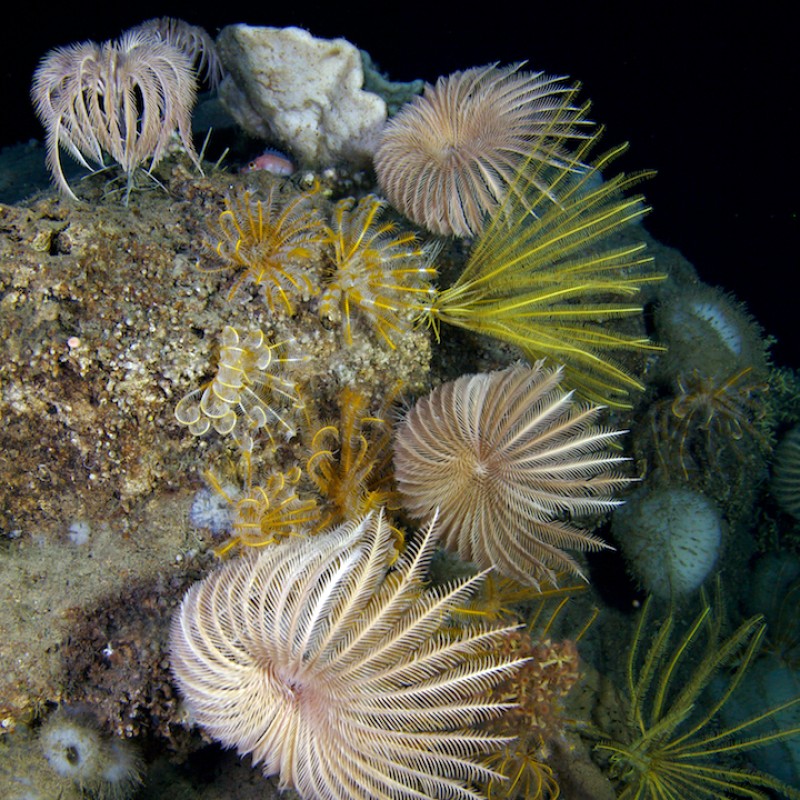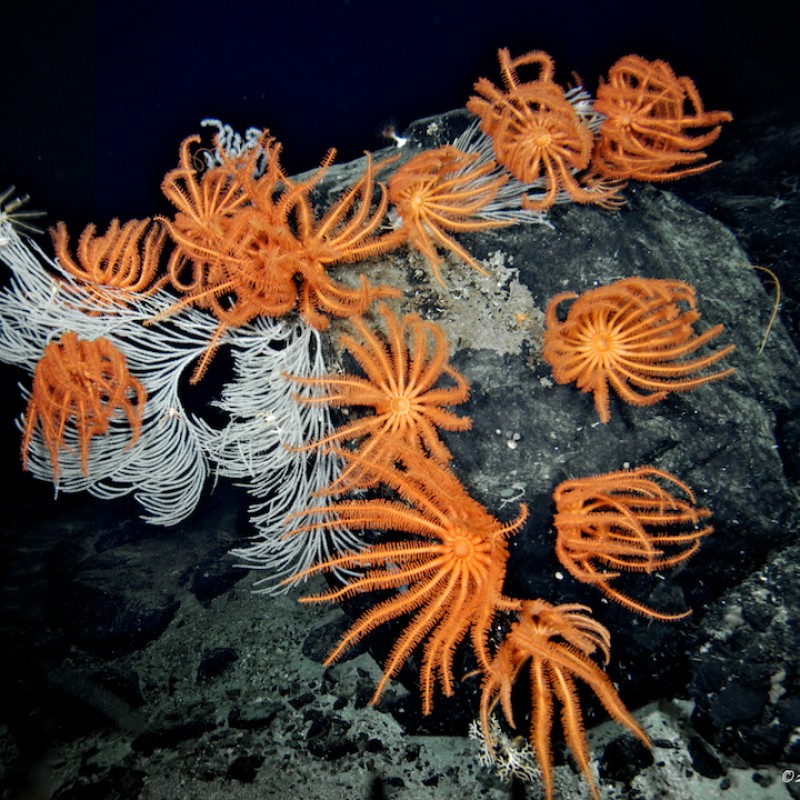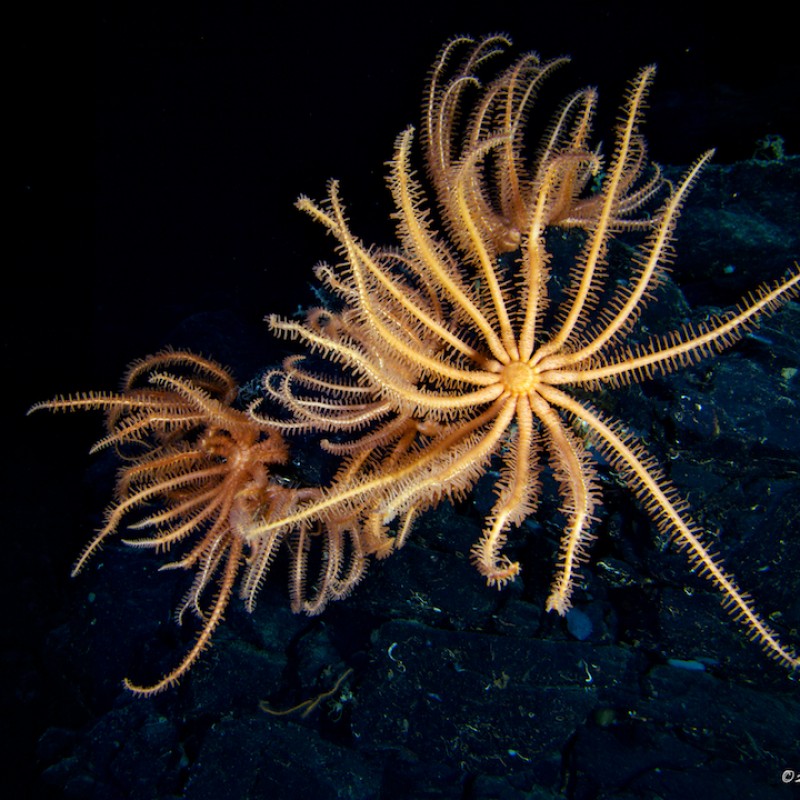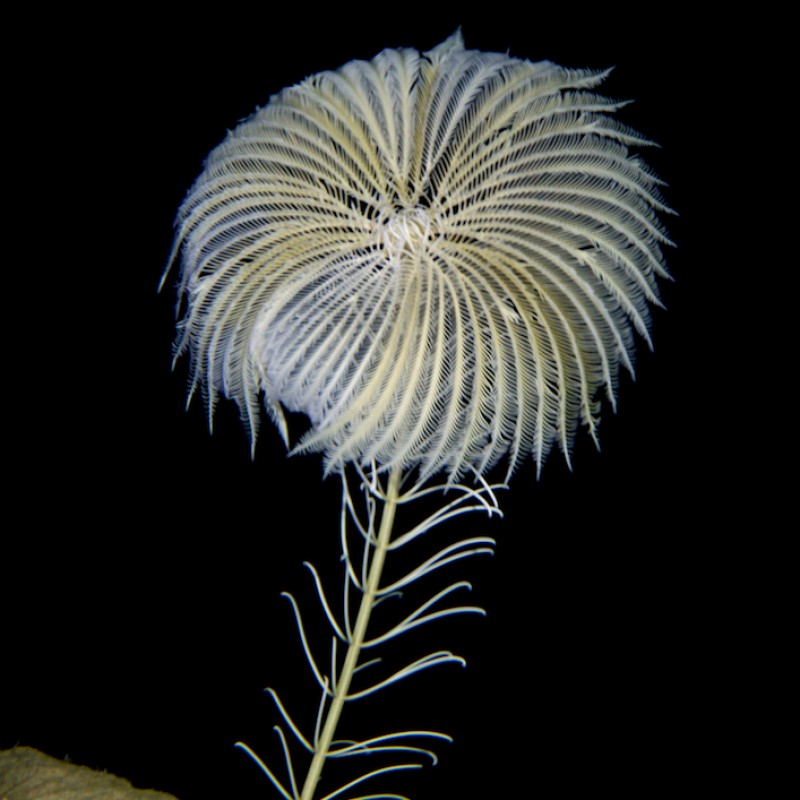Fossil discovery in the Alps: Insights on ancient deep-sea creatures
21. May 2014
The largest yet least studied ecosystem on Earth – the deep sea – has fascinated mankind for ages. There is an ongoing controversy
whether deep-sea organisms are ‘living fossils’ or, in contrast, descended from their shallow-water ancestors in geologically
recent times. Because fossils of deep-sea organisms become increasingly rare with increasing geological age, the debate remains
unsettled.
Fossil discovery in the Alps: Insights on ancient deep-sea creatures
The largest yet least studied ecosystem on Earth – the deep sea – has fascinated mankind for ages. There is an ongoing controversy whether deep-sea organisms are ‘living fossils’ or, in contrast, descended from their shallow-water ancestors in geologically recent times. Because fossils of deep-sea organisms become increasingly rare with increasing geological age, the debate remains unsettled.
The hypothesis that the deep-sea fauna has been repeatedly eradicated by mass extinctions and was subsequently replaced by newcomers from shallow seas has gained popularity in recent years. Yet, the claim could not be properly tested due to the lack of fossil evidence.
Now an international team of palaeontologists made a spectacular discovery: in 180 million year old deep-water rocks exposed in the Austrian Alps near Salzburg, they found nearly 70 different species of fossil deep-sea creatures. A comparison to their living relatives shows that although living in the deep sea does indeed provide shelter against extinction, it is not an evolutionary ‘dead end’ for species that failed to stand the stiff competition in shallow coastal seas. Quite the contrary, the study, published in the renowned scientific journal Proceedings of the Royal Society B, indicates that there has been a lively exchange of biodiversity between shallow seas and the deep ocean.
The now discovered fossils belong to sea urchins, sea stars, brittle stars, sea lilies, snails, and lamp shells, all of which are common and diverse in the deep sea today. But how could these deep-water fossils end up in the Alps? „Plate tectonics,“ explains Ben Thuy, lead author of the study and currently working at the Natural History Museum in Luxembourg, „made deposits of the ancient ocean floor emerge and being folded into a mountain chain.”
Several of the fossil species investigated by Ben Thuy’s team are the oldest of their kin – older than their fossil relatives from shallow-water rocks. This implies that the creatures in question evolved in the deep sea rather than being invaders from shallow waters, as previously assumed. Indeed, many of the fossils now discovered in the Alps belong to families that lived in the deep sea for many million years but left no trace in the shallow-water rock record.
“The new fossil locality provides a unique view on the composition of deep water faunas 180 million years ago. Then, like today echinoderms, such as brittle stars, sea lilies and sea urchins formed an important part of the deep water assemblages” says co-author of the study, Andreas Kroh, an expert for fossil echinoids at the Natural History Museum Vienna. “The deep sea evidently plays a much greater role in generating as well as sheltering marine biodiversity than previously assumed. Thus, it is all the more important to critically assess the impact of trawling and incipient deep-sea mining efforts on life in the deep-sea”, adds Ben Thuy.
The largest yet least studied ecosystem on Earth – the deep sea – has fascinated mankind for ages. There is an ongoing controversy whether deep-sea organisms are ‘living fossils’ or, in contrast, descended from their shallow-water ancestors in geologically recent times. Because fossils of deep-sea organisms become increasingly rare with increasing geological age, the debate remains unsettled.
The hypothesis that the deep-sea fauna has been repeatedly eradicated by mass extinctions and was subsequently replaced by newcomers from shallow seas has gained popularity in recent years. Yet, the claim could not be properly tested due to the lack of fossil evidence.
Now an international team of palaeontologists made a spectacular discovery: in 180 million year old deep-water rocks exposed in the Austrian Alps near Salzburg, they found nearly 70 different species of fossil deep-sea creatures. A comparison to their living relatives shows that although living in the deep sea does indeed provide shelter against extinction, it is not an evolutionary ‘dead end’ for species that failed to stand the stiff competition in shallow coastal seas. Quite the contrary, the study, published in the renowned scientific journal Proceedings of the Royal Society B, indicates that there has been a lively exchange of biodiversity between shallow seas and the deep ocean.
The now discovered fossils belong to sea urchins, sea stars, brittle stars, sea lilies, snails, and lamp shells, all of which are common and diverse in the deep sea today. But how could these deep-water fossils end up in the Alps? „Plate tectonics,“ explains Ben Thuy, lead author of the study and currently working at the Natural History Museum in Luxembourg, „made deposits of the ancient ocean floor emerge and being folded into a mountain chain.”
Several of the fossil species investigated by Ben Thuy’s team are the oldest of their kin – older than their fossil relatives from shallow-water rocks. This implies that the creatures in question evolved in the deep sea rather than being invaders from shallow waters, as previously assumed. Indeed, many of the fossils now discovered in the Alps belong to families that lived in the deep sea for many million years but left no trace in the shallow-water rock record.
“The new fossil locality provides a unique view on the composition of deep water faunas 180 million years ago. Then, like today echinoderms, such as brittle stars, sea lilies and sea urchins formed an important part of the deep water assemblages” says co-author of the study, Andreas Kroh, an expert for fossil echinoids at the Natural History Museum Vienna. “The deep sea evidently plays a much greater role in generating as well as sheltering marine biodiversity than previously assumed. Thus, it is all the more important to critically assess the impact of trawling and incipient deep-sea mining efforts on life in the deep-sea”, adds Ben Thuy.





